Last week's look at Canadian illustrator Oscar Cahén had me flipping through my small collection of old Maclean's, Chatelaine and Canadian Home Journal magazines.
I had forgotten how much I liked the work of the Canadian illustrators of the 50's and so I thought this week it might be fun to introduce you to some of these artists - mostly unknown to even those well versed in the illustration industry of the period.
So let's begin with an artist who had very close ties to Oscar Cahén...
Celebrating illustration, design, cartoon and comic art of the mid-20th century.
Monday, April 30, 2007
Jack Bush (1909-1977)
Jack Bush's illustration style was perhaps the most "commercial" of the illustrators who participated in The Painters Eleven group of Canadian abstract expressionists.

His regular contributions to Canada's major magazines reveal deep roots in the advertising art market, going back to the 1930's, when Bush ran a commercial art business.

Some of his editorial work from the early 1950's might begin to hint at his interest and eventual immersion in the exploration of Colourfield Painting and Lyrical Abstraction.

Personally, I find Bush's bold and slightly simplified approach to classically realistic illustration very appealing. Though commercial art was ultimately not as artistically satisfying for Bush as his fine art efforts...

...his illustrations provide an interesting counterpoint to the abstract work for which he gained international reknown.
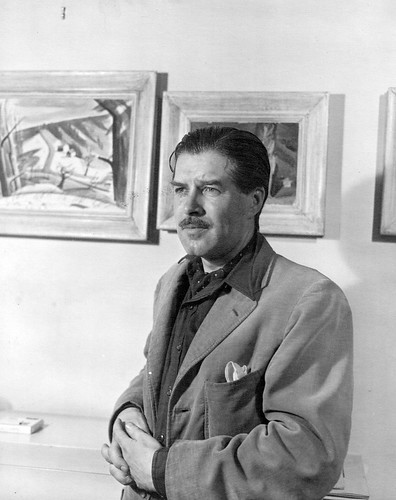
You can see all of these images at full size in my Jack Bush Flickr set.

His regular contributions to Canada's major magazines reveal deep roots in the advertising art market, going back to the 1930's, when Bush ran a commercial art business.

Some of his editorial work from the early 1950's might begin to hint at his interest and eventual immersion in the exploration of Colourfield Painting and Lyrical Abstraction.

Personally, I find Bush's bold and slightly simplified approach to classically realistic illustration very appealing. Though commercial art was ultimately not as artistically satisfying for Bush as his fine art efforts...

...his illustrations provide an interesting counterpoint to the abstract work for which he gained international reknown.

You can see all of these images at full size in my Jack Bush Flickr set.
Friday, April 27, 2007
Oscar Cahén, Fine Artist
In the late 80's, actor Peter Ustinov described Toronto as "New York run by the Swiss". In the early 50's you might have said Toronto was like Newark run by the British. Torontonians worked hard, wore dark suits and could not buy tobacco on Sundays. It was a town that rolled up the sidewalks at dusk and liked it that way.
Into this unlikely environment came a maverick artist and his gang of unruly compatriots.
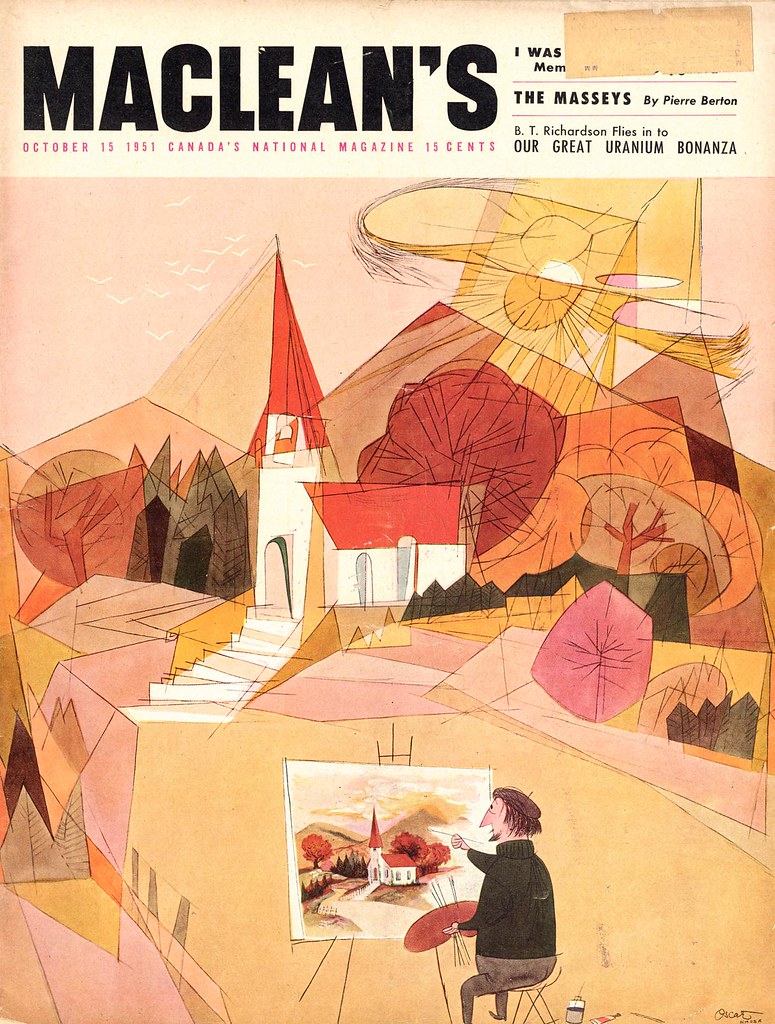
The last notable movement in Canadian art had been the international success of The Group of Seven and the culture had been stuck in a rut of artistic tradionalism ever since. According to artist Graham Coughtry, “every damn tree in the country has been painted.”
In 1953, Oscar Cahén...
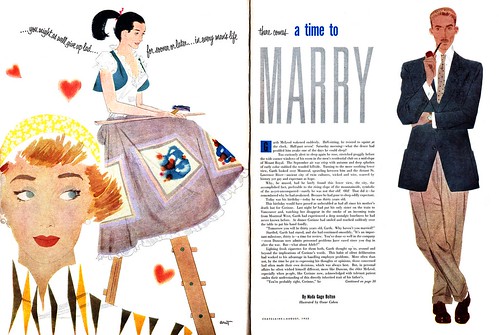
...along with Jack Bush...

...Harold Town...

..and several others decided to form a new collective, Painters Eleven, in an effort to give the Toronto art scene a “blood transfusion”.

In Robert Fulford's introduction to Magnificent Decade: The Art of Harold Town, 1955-1965, the author writes of Oscar Cahén, "by the time Painters Eleven formed, Cahén--now thirty-seven years old--had turned to abstractions in brilliant and unexpected colours. It was this startling palette that set him apart from his ten colleagues, and indeed from all painters in Canada. He had learned how to place one colour beside another in a way that produced unusual intensities."

When we juxtapose one of Cahén's abstracts against one of his illustrations from around the same period, it is not very difficult to see the same playful inventiveness at work. Cahén's artwork must have had a powerfully energizing effect on all who it touched in those otherwise dreary times.

On November 26th, 1956, Oscar Cahén was killed in a car crash near his home in Oakville. He was 40 years old.

In 1968, Karl Nickel, writing for The Ringling Museum of Art's exhibit,Oscar Cahén: First American Retrospective Exhibition, said "Such men speak clearly for their times, hurrying, even speeding through life and through brilliant accomplishments to an early and violent death. Any exhibition of Cahén’s work... gives a sense not only of great and lasting achievement, but also of tragically unfulfilled promise."
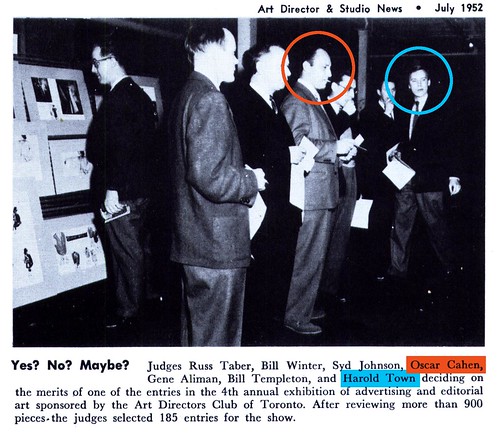
And the famous Canadian illustrator, James Hill, said, "As a young impressionable illustrator, you had to approach his work with caution, lest it grab you by the scruff of young innocence and inexperience and lead you in directions your inner light was guiding along other paths. You had to be nimble to avoid being constantly in the shadow of Oscar’s talent."

Most of the information and some of this week's images are from The Cahén Archives. Please visit the site for more artwork, photos and information about this great Canadian artist.
All of this week's images and information are © The Cahén Archives.
Into this unlikely environment came a maverick artist and his gang of unruly compatriots.

The last notable movement in Canadian art had been the international success of The Group of Seven and the culture had been stuck in a rut of artistic tradionalism ever since. According to artist Graham Coughtry, “every damn tree in the country has been painted.”
In 1953, Oscar Cahén...

...along with Jack Bush...

...Harold Town...

..and several others decided to form a new collective, Painters Eleven, in an effort to give the Toronto art scene a “blood transfusion”.

In Robert Fulford's introduction to Magnificent Decade: The Art of Harold Town, 1955-1965, the author writes of Oscar Cahén, "by the time Painters Eleven formed, Cahén--now thirty-seven years old--had turned to abstractions in brilliant and unexpected colours. It was this startling palette that set him apart from his ten colleagues, and indeed from all painters in Canada. He had learned how to place one colour beside another in a way that produced unusual intensities."

When we juxtapose one of Cahén's abstracts against one of his illustrations from around the same period, it is not very difficult to see the same playful inventiveness at work. Cahén's artwork must have had a powerfully energizing effect on all who it touched in those otherwise dreary times.

On November 26th, 1956, Oscar Cahén was killed in a car crash near his home in Oakville. He was 40 years old.

In 1968, Karl Nickel, writing for The Ringling Museum of Art's exhibit,Oscar Cahén: First American Retrospective Exhibition, said "Such men speak clearly for their times, hurrying, even speeding through life and through brilliant accomplishments to an early and violent death. Any exhibition of Cahén’s work... gives a sense not only of great and lasting achievement, but also of tragically unfulfilled promise."

And the famous Canadian illustrator, James Hill, said, "As a young impressionable illustrator, you had to approach his work with caution, lest it grab you by the scruff of young innocence and inexperience and lead you in directions your inner light was guiding along other paths. You had to be nimble to avoid being constantly in the shadow of Oscar’s talent."

Most of the information and some of this week's images are from The Cahén Archives. Please visit the site for more artwork, photos and information about this great Canadian artist.
All of this week's images and information are © The Cahén Archives.
Thursday, April 26, 2007
Out of the Darkness...
Oscar Cahén was born in Copenhagen, Denmark, on February 8th 1916. He studied design, illustration and painting in Germany, Italy, France, Sweden and Czechoslovakia. He had his first one-man show in Copenhagen in the 1930's (before he was twenty).
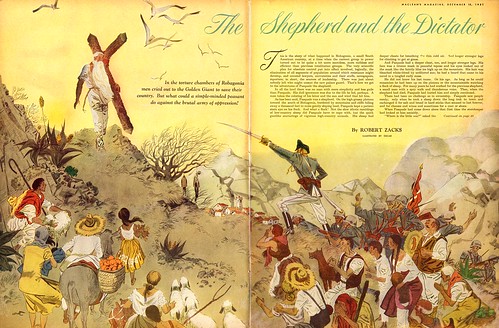 Cahén, with a Masters Degree in Fine Art from the Kunstakadame in Dresden, was enjoying a career as a professor of design, illustration and painting at the Rotter School in Prague. But his anti-Nazi activities in pre-war Germany necessitated flight, bringing him to Canada.
Cahén, with a Masters Degree in Fine Art from the Kunstakadame in Dresden, was enjoying a career as a professor of design, illustration and painting at the Rotter School in Prague. But his anti-Nazi activities in pre-war Germany necessitated flight, bringing him to Canada.

Author Robert Fulford wrote, "Like many Jews, [Cahén] was at first interned as an enemy alien by an obtuse Canadian government; contacts in the art world finally rescued him, and he went to work as a commercial artist."
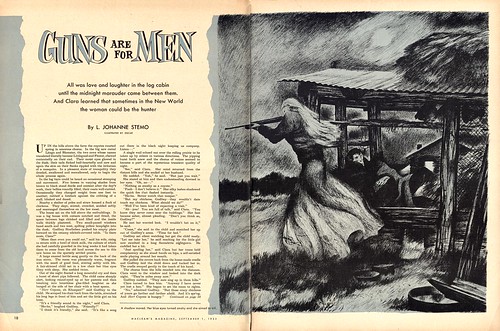
The details of Oscar Cahén's entré into the Canadian illustration field are actually even more fascinatingly coincidental than simply "being rescued".
The famous Canadian illustrator, James Hill, in a speech delivered at the 1988 CAPIC President's Dinner, said, "A regional news magazine in Quebec, The Standard, was running a story on "displaced persons" in the refugee camp where Cahén was interned. They noticed him working on a drawing. Soon afterwards, Ben Turner, the Art Director of The Standard began using Cahén's work in the magazine."

"A year later Oscar was released thanks to the intervention of several insightful individuals who had noticed the quality of Oscar's work and who were willing to guarantee the Camp Commander that Oscar could earn a living wage and would not become involved in subversive political matters."
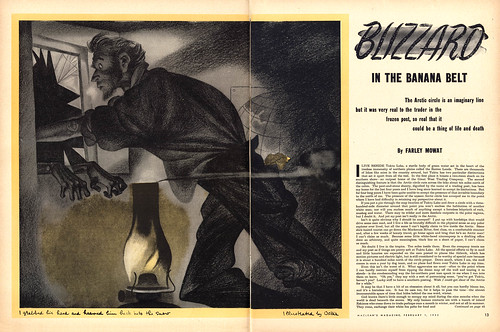
"Among Cahén's early supporters were Dick Hersey of The Montreal Standard, Stan Furnival, who subsequently became Art Director of Chatelaine Magazine, and Gene Aliman of New Liberty, and later Maclean’s."

"Before long, Oscar Cahén was busy forging a powerful reputation for being a vibrant and versatile illustrator with a conscientious and disciplined approach to all assignments. With a reputation like this, it was not surprising that Oscar was soon working for all the top publications of the day."
*Most of the information and some of this week's images are from The Cahén Archives. Please visit the site for more artwork, photos and information about this great Canadian artist.
All of this week's images and information are © The Cahén Archives.
 Cahén, with a Masters Degree in Fine Art from the Kunstakadame in Dresden, was enjoying a career as a professor of design, illustration and painting at the Rotter School in Prague. But his anti-Nazi activities in pre-war Germany necessitated flight, bringing him to Canada.
Cahén, with a Masters Degree in Fine Art from the Kunstakadame in Dresden, was enjoying a career as a professor of design, illustration and painting at the Rotter School in Prague. But his anti-Nazi activities in pre-war Germany necessitated flight, bringing him to Canada.
Author Robert Fulford wrote, "Like many Jews, [Cahén] was at first interned as an enemy alien by an obtuse Canadian government; contacts in the art world finally rescued him, and he went to work as a commercial artist."

The details of Oscar Cahén's entré into the Canadian illustration field are actually even more fascinatingly coincidental than simply "being rescued".
The famous Canadian illustrator, James Hill, in a speech delivered at the 1988 CAPIC President's Dinner, said, "A regional news magazine in Quebec, The Standard, was running a story on "displaced persons" in the refugee camp where Cahén was interned. They noticed him working on a drawing. Soon afterwards, Ben Turner, the Art Director of The Standard began using Cahén's work in the magazine."

"A year later Oscar was released thanks to the intervention of several insightful individuals who had noticed the quality of Oscar's work and who were willing to guarantee the Camp Commander that Oscar could earn a living wage and would not become involved in subversive political matters."

"Among Cahén's early supporters were Dick Hersey of The Montreal Standard, Stan Furnival, who subsequently became Art Director of Chatelaine Magazine, and Gene Aliman of New Liberty, and later Maclean’s."

"Before long, Oscar Cahén was busy forging a powerful reputation for being a vibrant and versatile illustrator with a conscientious and disciplined approach to all assignments. With a reputation like this, it was not surprising that Oscar was soon working for all the top publications of the day."
*Most of the information and some of this week's images are from The Cahén Archives. Please visit the site for more artwork, photos and information about this great Canadian artist.
All of this week's images and information are © The Cahén Archives.
Wednesday, April 25, 2007
The Fanciful Oscar Cahén
There is nothing contrived about Oscar Cahén's many humorous illustrations... they exude a genuine warmth... a joie de vivre.
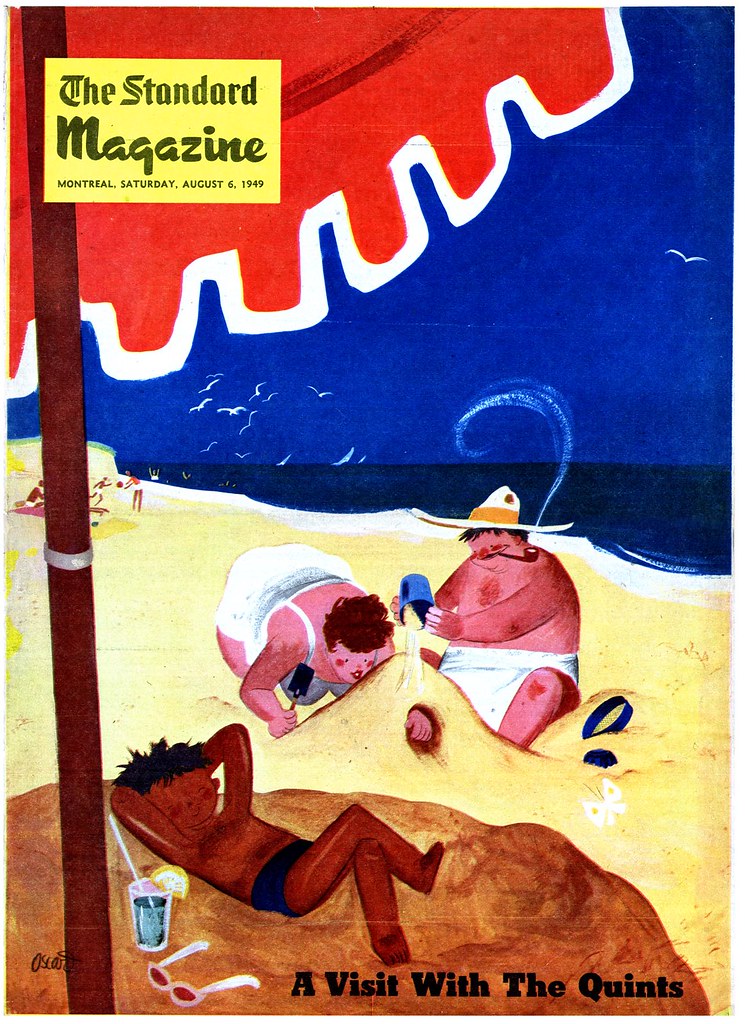
Cahén drew on personal experience when he painted the cover above, saying, "Ever since he was born, our son Mike has been proving consistently that he was smarter than his parents. For a while we made a show of resistance, tried to pretend whenever he put something over us that he was just getting away with it through parental indulgence. But lately we've given up. This cover design is my public confession of defeat."
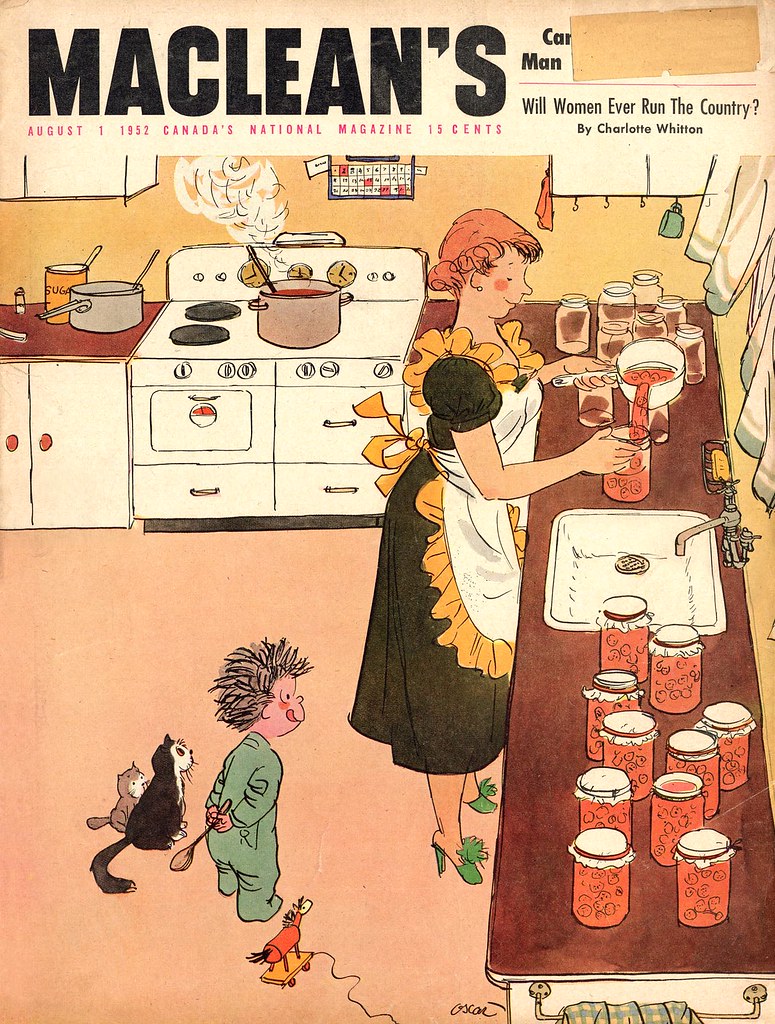
An editor at Maclean's magazine, for which Cahén did hundreds of illustrations and covers over a ten year period, wrote about the "gayness and spontaneity, as well as a sureness of touch that stamps... the work of [Oscar Cahén], an extraordinary illustrator."

And the famous Canadian illustrator, James Hill, said of his friend, "Oscar broke new ground and showed us wit, humour and lightheartedness."
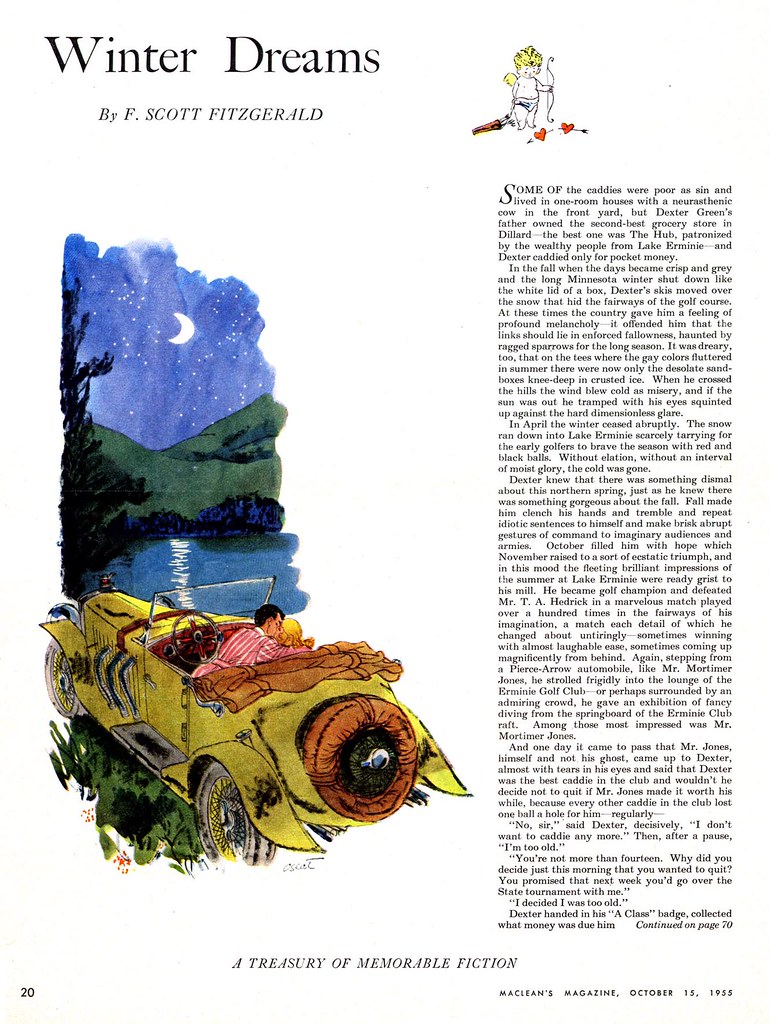
"It was as if one had never seen a crocus before and a flower with strength and vigour; but extraordinary delicacy thrust through the snow and winter debris of what much of Canadian magazine publishing had been. Spring arrived in Canadian illustration with Oscar Cahén – and we rejoiced."
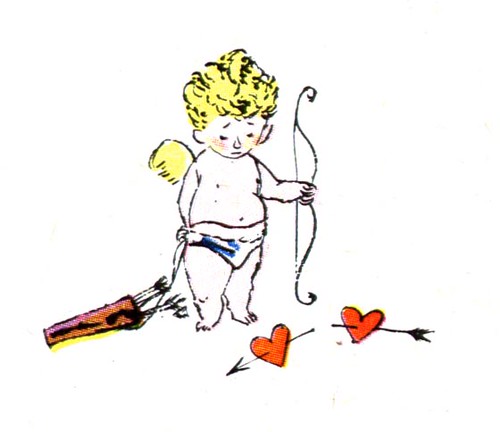
"He cleared the way with dash and panache to allow sophistication and sunshine to fall upon a dreary landscape of publishing."
*Most of the information and some of this week's images are from The Cahén Archives. Please visit the site for more artwork, photos and information about this great Canadian artist.
All of this week's images and information are © The Cahén Archives.

Cahén drew on personal experience when he painted the cover above, saying, "Ever since he was born, our son Mike has been proving consistently that he was smarter than his parents. For a while we made a show of resistance, tried to pretend whenever he put something over us that he was just getting away with it through parental indulgence. But lately we've given up. This cover design is my public confession of defeat."

An editor at Maclean's magazine, for which Cahén did hundreds of illustrations and covers over a ten year period, wrote about the "gayness and spontaneity, as well as a sureness of touch that stamps... the work of [Oscar Cahén], an extraordinary illustrator."

And the famous Canadian illustrator, James Hill, said of his friend, "Oscar broke new ground and showed us wit, humour and lightheartedness."

"It was as if one had never seen a crocus before and a flower with strength and vigour; but extraordinary delicacy thrust through the snow and winter debris of what much of Canadian magazine publishing had been. Spring arrived in Canadian illustration with Oscar Cahén – and we rejoiced."

"He cleared the way with dash and panache to allow sophistication and sunshine to fall upon a dreary landscape of publishing."
*Most of the information and some of this week's images are from The Cahén Archives. Please visit the site for more artwork, photos and information about this great Canadian artist.
All of this week's images and information are © The Cahén Archives.
Tuesday, April 24, 2007
Oscar Cahén and the Art of the Inked Line

If you can try to imagine Toronto, indeed, Canada, in the early 50's, it was hardly a cosmopolitan society with adventurous tastes. In the words of one of Oscar Cahén's contemporaries, "It was a backwater."

Into this drab, post-war, white bread culture, Oscar Cahén, with the support of enlightened magazine editors and art directors, exploded like a bombshell. When you look over even the small sampling of his work I've been able to locate it sometimes seems that the ever-restless Cahén rarely employed the exact same technique twice.

“Cahén’s highly individual, strangely compelling magazine work," wrote columnist, McKenzie Porter, "brought him into such demand that once he would have had to draw 48 hours a day to keep up with all the commissions from The Standard, Maclean's Magazine, Canadian Home Journal, National Home Monthly, New Liberty and other periodicals.
… In an unprecedented reversal of editorial procedure, Cahén’s drawings were sent to fiction authors who were inspired to write stories around them”.
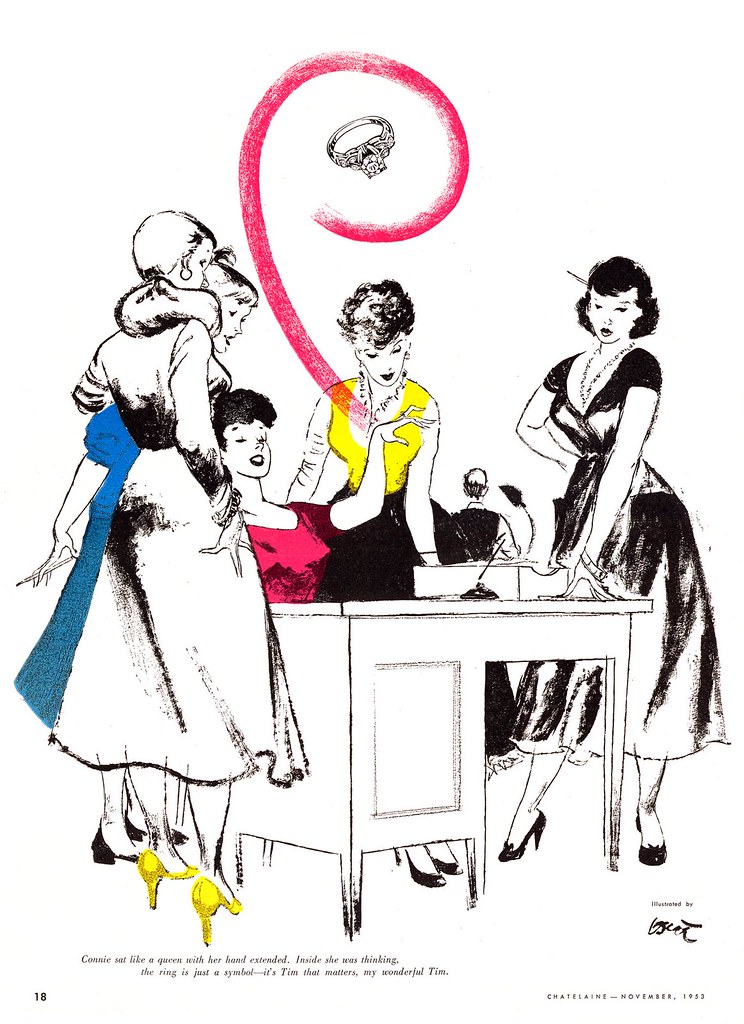
All of these images can be seen at full size in my Oscar Cahén Flickr set.
*Most of the information and some of this week's images are from The Cahén Archives. Please visit the site for more artwork, photos and information about this great Canadian artist.
All of this week's images and information are © The Cahén Archives.
Monday, April 23, 2007
Oscar Cahén (1916-1956)
Oscar Cahén was one of the most successful and prolific illustrators in Canada during the 40's and 50's.

In the microcosm of the Canadian commercial art market, Cahén was far and away the most innovative, experimental and inspirational of his peers.
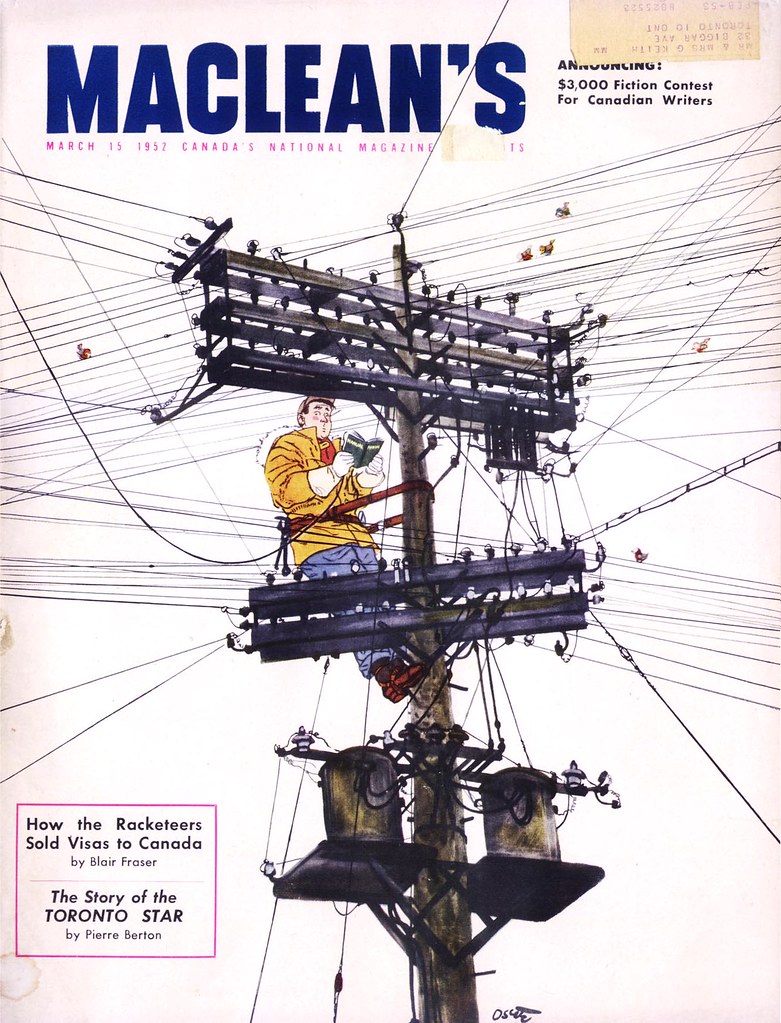
Cahén was really only beginning to fully mature as an artistic force when his life was tragically cut short at age 40.

This week let's take a look at a nearly forgotten giant of the mid-twentieth century Canadian art scene: Oscar Cahén.
*Most of the information and some of this week's images are from The Cahén Archives. Please visit the site for more artwork, photos and information about this great Canadian artist.
All of this week's images and information are © The Cahén Archives.

In the microcosm of the Canadian commercial art market, Cahén was far and away the most innovative, experimental and inspirational of his peers.

Cahén was really only beginning to fully mature as an artistic force when his life was tragically cut short at age 40.

This week let's take a look at a nearly forgotten giant of the mid-twentieth century Canadian art scene: Oscar Cahén.
*Most of the information and some of this week's images are from The Cahén Archives. Please visit the site for more artwork, photos and information about this great Canadian artist.
All of this week's images and information are © The Cahén Archives.
Friday, April 20, 2007
Cheer up! Its "The Peace Atom"!
When is a nuclear explosion not the ultimate act of war? Why, when its the fission reaction of a "peace atom" in a breeder reactor, of course!

And when is "a powerful new Navy guided missile" not a weapon of mass destruction? When its part of "a sound peacetime Air power policy". Who knew?

Yes throughout the 50's, alongside a steady diet of doom and gloom, advertisers assured the public that, not only had the good guys harnessed the power of the atom,

but that a bigger, brighter future was only years away, thanks to the mighty atom.
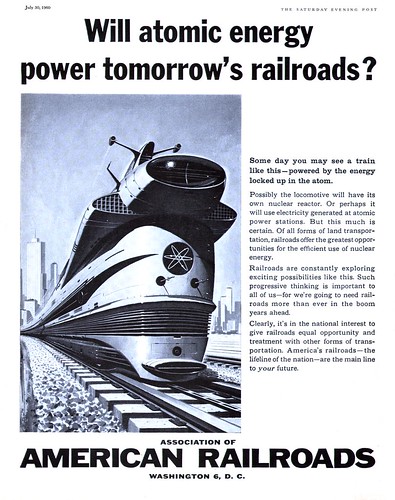
Despite such glowing (if you'll excuse the pun) predictions of how atomic power would change our lives for the better, you get the sense the public remained unconvinced. Consider this example: in the same July 1960 issue of The Saturday Evening Post in which The Association of National Railroads predicted we'd all soon be riding in nuclear powered trains, Mike Ludlow illustrated this angst ridden tale (below) of a couple contemplating whether life was worth living when the bombs might drop at any moment. How's that for ironic juxtoposition?

And if the bomb didn't get us, there was always "G-gas"!
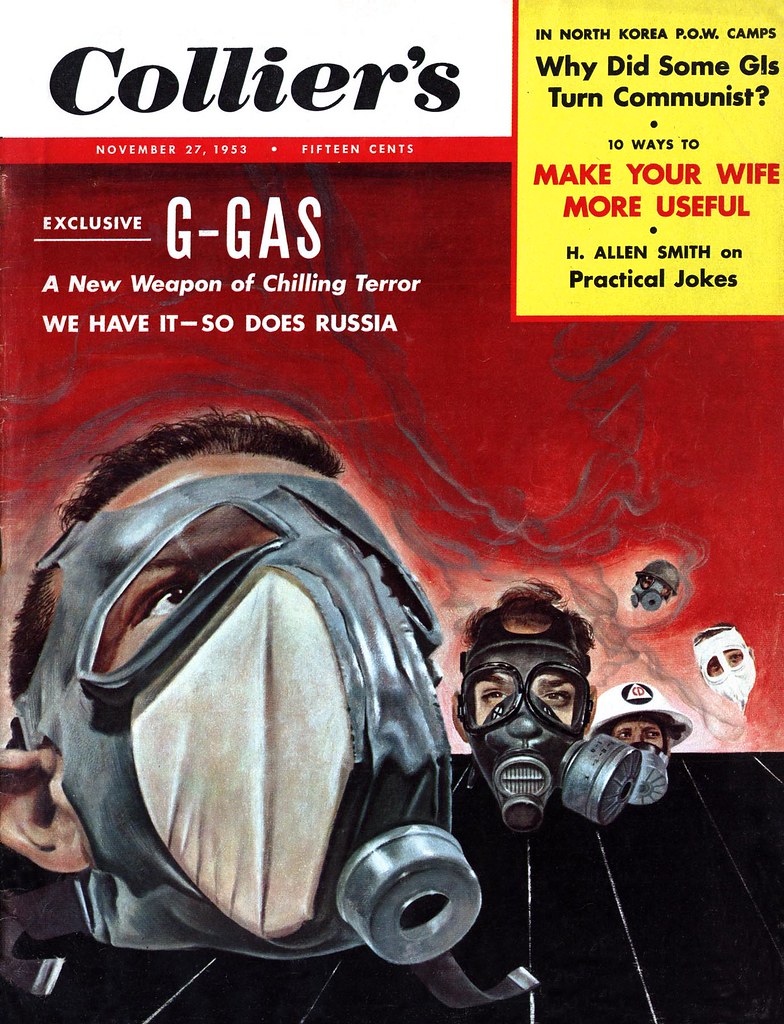
And so the Cold War rolled merrily along...
* All of today's images can be found at full size in my Atomic Age and Red Menace Flickr sets.

And when is "a powerful new Navy guided missile" not a weapon of mass destruction? When its part of "a sound peacetime Air power policy". Who knew?

Yes throughout the 50's, alongside a steady diet of doom and gloom, advertisers assured the public that, not only had the good guys harnessed the power of the atom,

but that a bigger, brighter future was only years away, thanks to the mighty atom.

Despite such glowing (if you'll excuse the pun) predictions of how atomic power would change our lives for the better, you get the sense the public remained unconvinced. Consider this example: in the same July 1960 issue of The Saturday Evening Post in which The Association of National Railroads predicted we'd all soon be riding in nuclear powered trains, Mike Ludlow illustrated this angst ridden tale (below) of a couple contemplating whether life was worth living when the bombs might drop at any moment. How's that for ironic juxtoposition?

And if the bomb didn't get us, there was always "G-gas"!

And so the Cold War rolled merrily along...
* All of today's images can be found at full size in my Atomic Age and Red Menace Flickr sets.
Thursday, April 19, 2007
Wait! Don't push that bu- ...oops.
Mistakes happen. For those of us who have lived our entire lives in the shadow of a potential nuclear war I suppose we've become a little blasé about that. But back in the 50's the possibility of an atomic accident must have been absolutely nerve wracking!
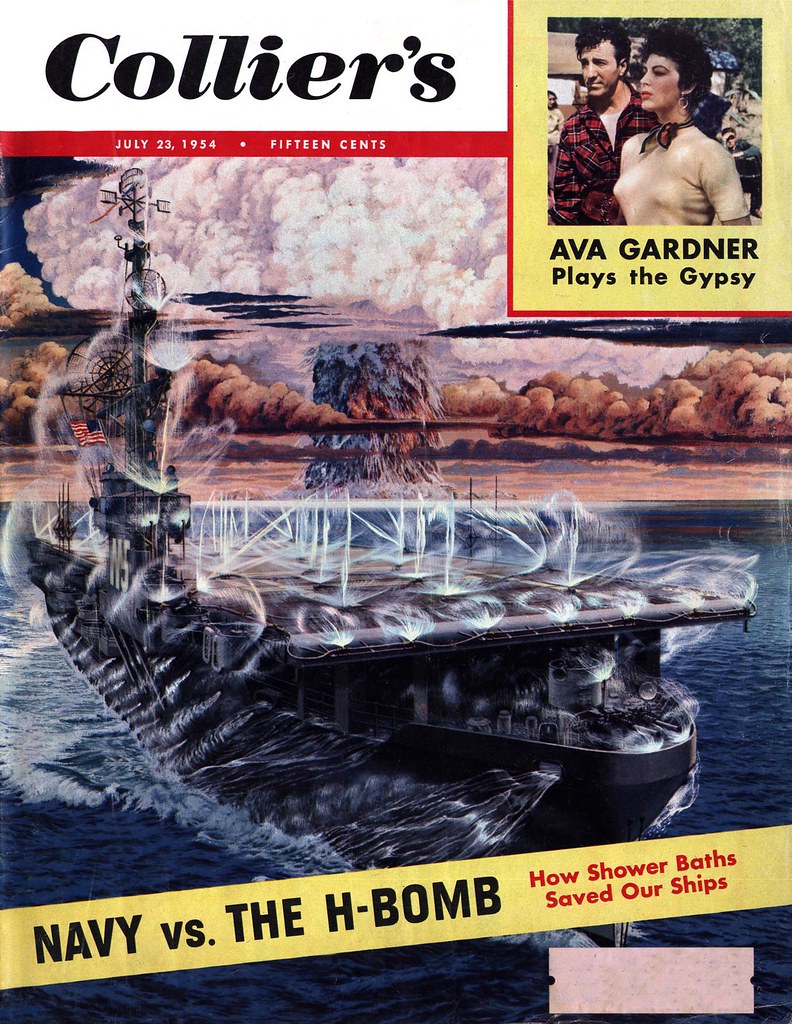
In July 1954, Collier's chose Fred Freeman to illustrate how the U.S. Navy had dealt with a real accident: when some of its ships where mistakenly positioned within fallout range of a H-bomb test, they quickly got the world's biggest car wash (or boat wash, I guess). Whew!
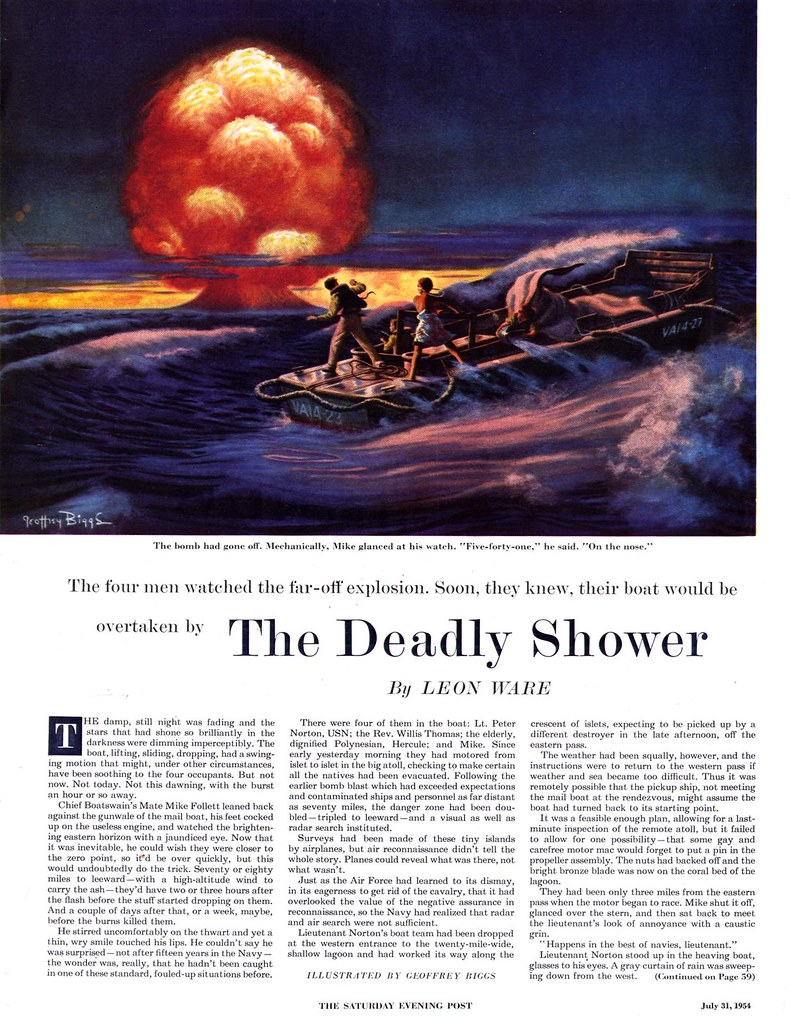
That same month, The Saturday Evening Post ran this fiction piece where a tiny, stupid mistake puts four sailors in danger of slow death by radiation at another nuclear test zone. Happily, they are rescued in the nick of time by a U.S. sub which has drifted off course due to - yup - a silly little mistake.

Five years later, Arthur Lidov illustrated this story of how bad weather over the Arctic caused a half dozen domestic aircraft to be misidentified as a Russian attack. Only through the determination of the commanders at NORAD to avoid making the ultimate mistake is a nuclear holocaust avoided. But the message to the 1950's reader is clear: we are, every minute of every day, on the brink of no return.
Stories like these were not nearly as prevalent as the usual romantic, western or crime stories that regularly filled the pages of the mainstream magazines. Still, they must surely have added to the general air of angst and dread that people had to live with in the early days of the atomic age.
Tomorrow: Cheer Up!
* All these images can be viewed at full size in my Atomic Age Flick set.

In July 1954, Collier's chose Fred Freeman to illustrate how the U.S. Navy had dealt with a real accident: when some of its ships where mistakenly positioned within fallout range of a H-bomb test, they quickly got the world's biggest car wash (or boat wash, I guess). Whew!

That same month, The Saturday Evening Post ran this fiction piece where a tiny, stupid mistake puts four sailors in danger of slow death by radiation at another nuclear test zone. Happily, they are rescued in the nick of time by a U.S. sub which has drifted off course due to - yup - a silly little mistake.

Five years later, Arthur Lidov illustrated this story of how bad weather over the Arctic caused a half dozen domestic aircraft to be misidentified as a Russian attack. Only through the determination of the commanders at NORAD to avoid making the ultimate mistake is a nuclear holocaust avoided. But the message to the 1950's reader is clear: we are, every minute of every day, on the brink of no return.
Stories like these were not nearly as prevalent as the usual romantic, western or crime stories that regularly filled the pages of the mainstream magazines. Still, they must surely have added to the general air of angst and dread that people had to live with in the early days of the atomic age.
Tomorrow: Cheer Up!
* All these images can be viewed at full size in my Atomic Age Flick set.
Wednesday, April 18, 2007
The Red Menace
The key to the proliferation of atomic weapons during the 50's (and beyond) was the presence of a potential enemy with similar technology: "The Red Menace".
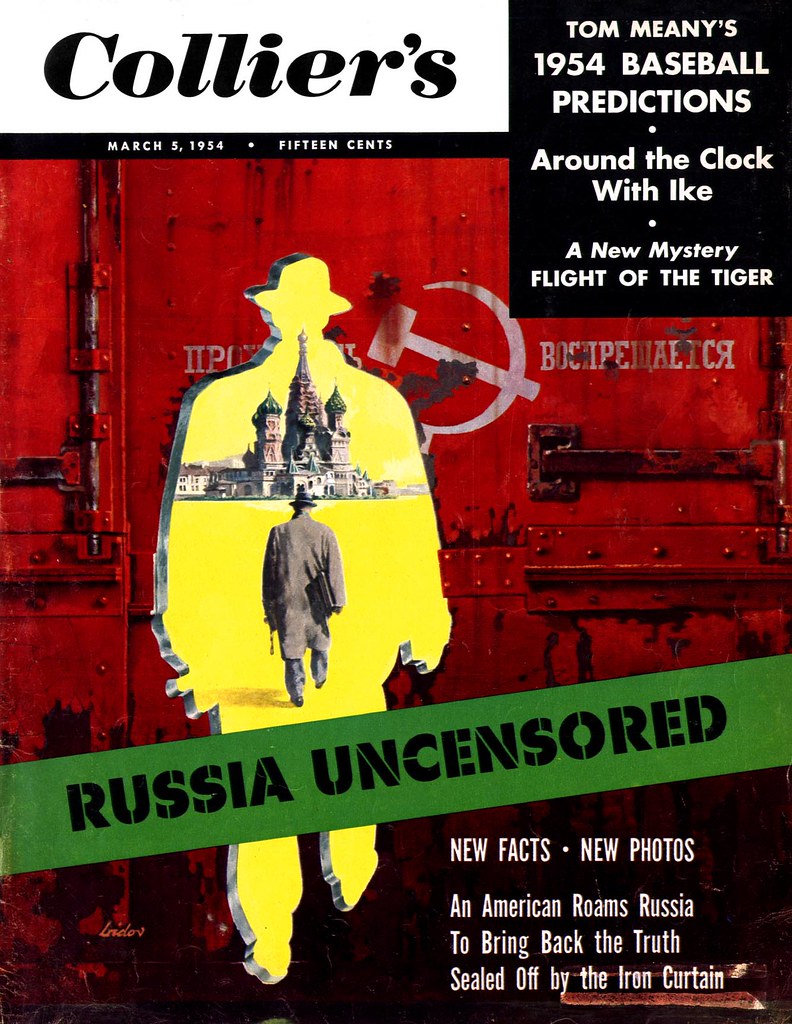
Its a rare issue of Collier's or The Saturday Evening Post from any year between 1950 and 1960 that doesn't have at least one article focusing on the potential threat of Russia's ever-growing arsenal. If magazines were indeed where most Americans got their world news, its no surpise that dad was out in the yard, frantically digging a bomb shelter!

While the majority of articles about the enemy where op-ed or reportage, this oddity, illustrated by Stevan Dohanos is excerpted from a novel by Russian expatriate, Nikolai Marchenko.
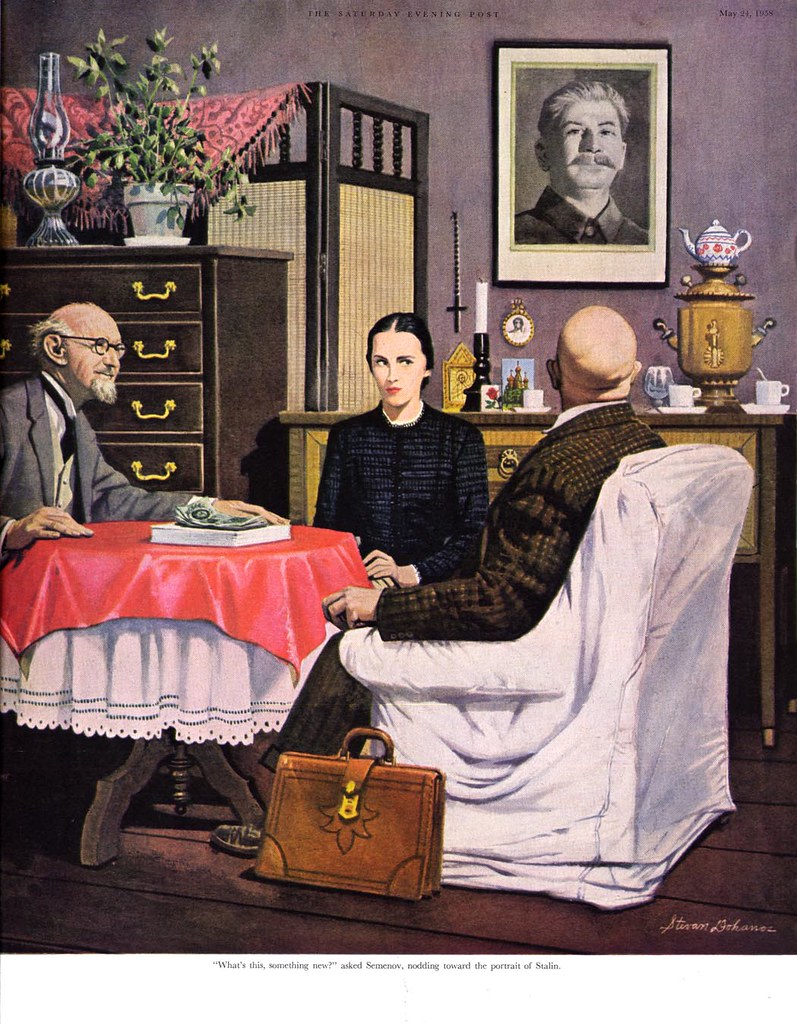
The cumulative effect of so much peeking behind the Iron Curtain must surely have helped foment public opinion that more and bigger bombs where the only effective deterrent to being overrun by Communist invaders. No wonder everybody in the 50's was coming home from work and heading straight to the bar for a martini!

Still, when you're playing with atoms, you don't need enemies to put your life in danger. Tomorrow: Oops!
* All of today's images can be seen in my Red Menace Flickr set.

Its a rare issue of Collier's or The Saturday Evening Post from any year between 1950 and 1960 that doesn't have at least one article focusing on the potential threat of Russia's ever-growing arsenal. If magazines were indeed where most Americans got their world news, its no surpise that dad was out in the yard, frantically digging a bomb shelter!

While the majority of articles about the enemy where op-ed or reportage, this oddity, illustrated by Stevan Dohanos is excerpted from a novel by Russian expatriate, Nikolai Marchenko.

The cumulative effect of so much peeking behind the Iron Curtain must surely have helped foment public opinion that more and bigger bombs where the only effective deterrent to being overrun by Communist invaders. No wonder everybody in the 50's was coming home from work and heading straight to the bar for a martini!

Still, when you're playing with atoms, you don't need enemies to put your life in danger. Tomorrow: Oops!
* All of today's images can be seen in my Red Menace Flickr set.
Tuesday, April 17, 2007
Business is Booming!
The power of the atom certainly created a wealth of opportunities for the private sector. These days companies in the radiation business tend to focus on how their products and services benefit the consumer -- with nuclear medicine or nuclear energy for instance.

But back in the 50's many corporations were enthusiastically extolling the virtues of their atom bomb-making abilities...

...or using the "atomic wallop" of a guided missile that "thinks for itself" as a desirable comparison for the quality of their product. I'm thinking most PR firms today would recommend against that particular strategy!

Yes, nothing made the 50's consumer sigh with contentment quite like the sight of a beautifully lit landscape... with a nuclear warhead streaking through the sky on its way to obliterate some godless Commie stronghold.
Tomorrow: Meet the Enemy.
* All these images can be seen at full size in my Atomic Age Flickr set.

But back in the 50's many corporations were enthusiastically extolling the virtues of their atom bomb-making abilities...

...or using the "atomic wallop" of a guided missile that "thinks for itself" as a desirable comparison for the quality of their product. I'm thinking most PR firms today would recommend against that particular strategy!

Yes, nothing made the 50's consumer sigh with contentment quite like the sight of a beautifully lit landscape... with a nuclear warhead streaking through the sky on its way to obliterate some godless Commie stronghold.
Tomorrow: Meet the Enemy.
* All these images can be seen at full size in my Atomic Age Flickr set.
Monday, April 16, 2007
Fear and Loathing in the Atomic Age
Ahh, the atom. Its a love/hate relationship we have with our little nuclear friend, isn't it? I love the electricity coursing through my house that allows me to upload this post, keep all sorts of yummy food in the fridge and provide cheerful light on this gloomy day.
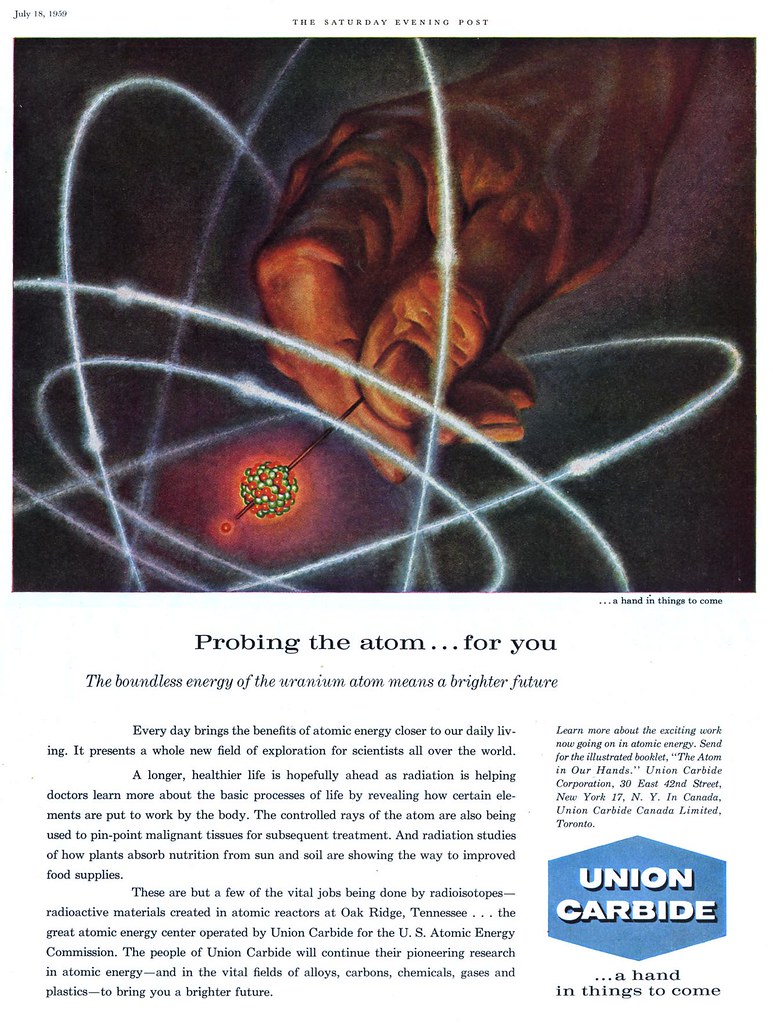
But I hate knowing that to enjoy these basic necessities of modern life I depend on the splitting of atoms and the resulting deadly waste. Just one hour of exposure to a spent fuel rod from one of Ontario's nuclear reactors and I'd be a dead man. Right now there are 30,000 tonnes of spent fuel rods in temporary storage at Ontario's three nuclear generating stations. They will be dangerous to everyone and everything on earth for half a million years. No one has been able to determine where or how to store them safely and permanently.
And then there's that other thing we figured out how to do with atoms...

Yup, we love it when we have these things and hate it when the other guy has these things. Seems like these days everybody's got these things when really, it would probably be best if nobody had these things.
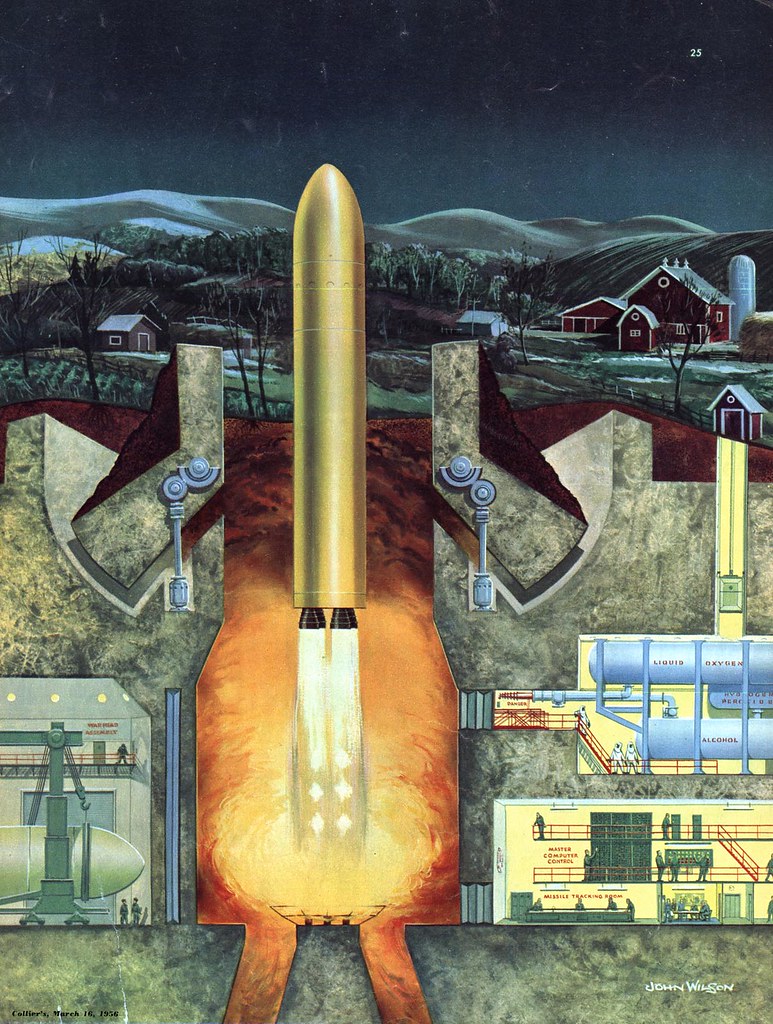
This week, let's take a look at the art of the atomic age. You can see these images at full size in my new Atomic Age Flickr set.

But I hate knowing that to enjoy these basic necessities of modern life I depend on the splitting of atoms and the resulting deadly waste. Just one hour of exposure to a spent fuel rod from one of Ontario's nuclear reactors and I'd be a dead man. Right now there are 30,000 tonnes of spent fuel rods in temporary storage at Ontario's three nuclear generating stations. They will be dangerous to everyone and everything on earth for half a million years. No one has been able to determine where or how to store them safely and permanently.
And then there's that other thing we figured out how to do with atoms...

Yup, we love it when we have these things and hate it when the other guy has these things. Seems like these days everybody's got these things when really, it would probably be best if nobody had these things.

This week, let's take a look at the art of the atomic age. You can see these images at full size in my new Atomic Age Flickr set.
Subscribe to:
Comments (Atom)